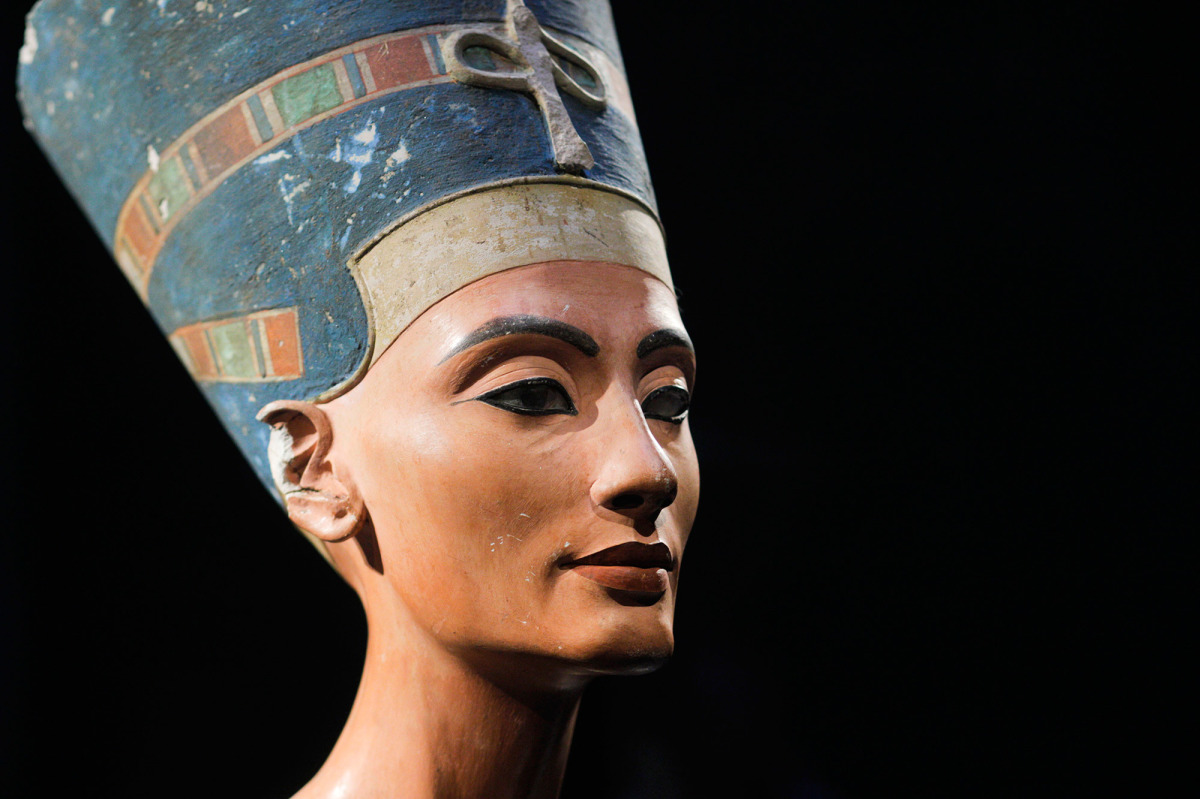Her iconic beauty inspired the world for many years; her missed body astonished many experts and left them wondering about the place of her tomb until today. This is Queen Nefertiti one of the most beautiful and powerful Egyptian Queens in ancient Egypt. Her name means “a beautiful woman has come,”; she was the wife of Pharaoh Akhenaten during the 14th century B.C. She and her husband established a religious reform during their ruling period; promoting worshiping one god, the sun Aten. She died in 1,300 BC and her tomb was never found. Her famous coloured bust statue which reveals her beauty is considered one of the most iconic symbols of Egypt.
After many experts failed to allocate the place of her tomb, recently Nicholas Reeves, a British Egyptologist, argues that the beautiful Queen is buried behind one wall of Tuankhamun’s tomb. Leading experts have taken sides against Reeves’s theory; the main opposing expert is Egypt’s former antiquities minister, Mr. Zahi hawas.
Reeves is basing his theory on high-resolution images of the interior of Tutankhamun’s tomb. He believes that two secret passageways are visible through cracks and fissures. He sets out his belief that one passage could contain a mundane store room, but another could lead to Nefertiti’s tomb.
Mr Reeves believes that the tomb of Tutankhamun was originally built for Queen Nefertiti and that she lies behind what he believes is a partition wall.
On the other side Zahi hawas believes that Reeves’s theory is baseless and we are not entitled to test theories that experts come up to. He added that the tomb is very vulnerable and any diggings will be considered a threat to the tomb.
As for the ministry of antiquities, Mamdouh al-Damaty, the current minister of antiquities, has said that there is a 90 per cent chance that hidden chambers exist behind the walls of Tutankhamun’s tomb.
“If we discover that Queen Nefertiti was buried at the Valley of the Kings in Luxor, we would actually need to rewrite the historical aspects of certain ruling periods in old Egypt.” Stated Samir Abbas, Egyptologist.
Samir told MEO that it is a very weak possibility that Queen Nefertiti would be buried at the Valley of the Kings with Tutankhamun. He explains that the death of Tutankhamum came very sudden and ancients Egyptians had to work with a very fast pace in order to prepare his tomb. The partition wall that Reeves is referring to was built inside the tomb of Tutankhamun in order to minimise the size of the tomb as it was build very fast upon the sudden death of the young King.
“If we assume that Queen Nefertiti is buried inside Tutankhamun’s tomb at the Valley of the Kings, this would be contradict various historical facts; most speculations point out that she is buried in Tal El Amarna in Menya governorate where her husband was buried.” Stated Samir.
Ahmed Seddik, Egyptologist, told MEO that Tutankhamun was buried in Luxor at the Valley of the Kings. Luxor at this historical period of time was dedicated to the worship of the state god Amoun and in fact, Tutankhamun dedicated his life worshiping Amoun.
“Originally his name was Tutankhatun and it was changed to Tutankhamun and that is why he was buried in the Valley of the Kings in Luxor, which was all dedicated to worshiping Amoun”. Said Seddik.
On the other side Queen Nefertiti was supporting Akhenaten, her husband, and helped him build a whole new city away from the capital of Amoun, Luxor. It is very difficult that she would be buried in Luxor. Priests of Amoun would have actually refused to bury her at the valley of the Kings in Luxor which was all dedicated to worshiping Amoun, explains Ahmed Seddik.
“It is a possibility to witness soon a new discovery at the valley of the King, however it is not related to Nefertiti; actually I agree with dr. Zahi Hawas, that we should not rush to excavate in Upper Egypt, where we have a multiplicity of monuments and antiquities.” Stated Seddik.
Still Egypt grabs international and worldwide attention; its rich history and ancient layers of civilisations make Egypt’s presence on the global map a continuous significant presence.


